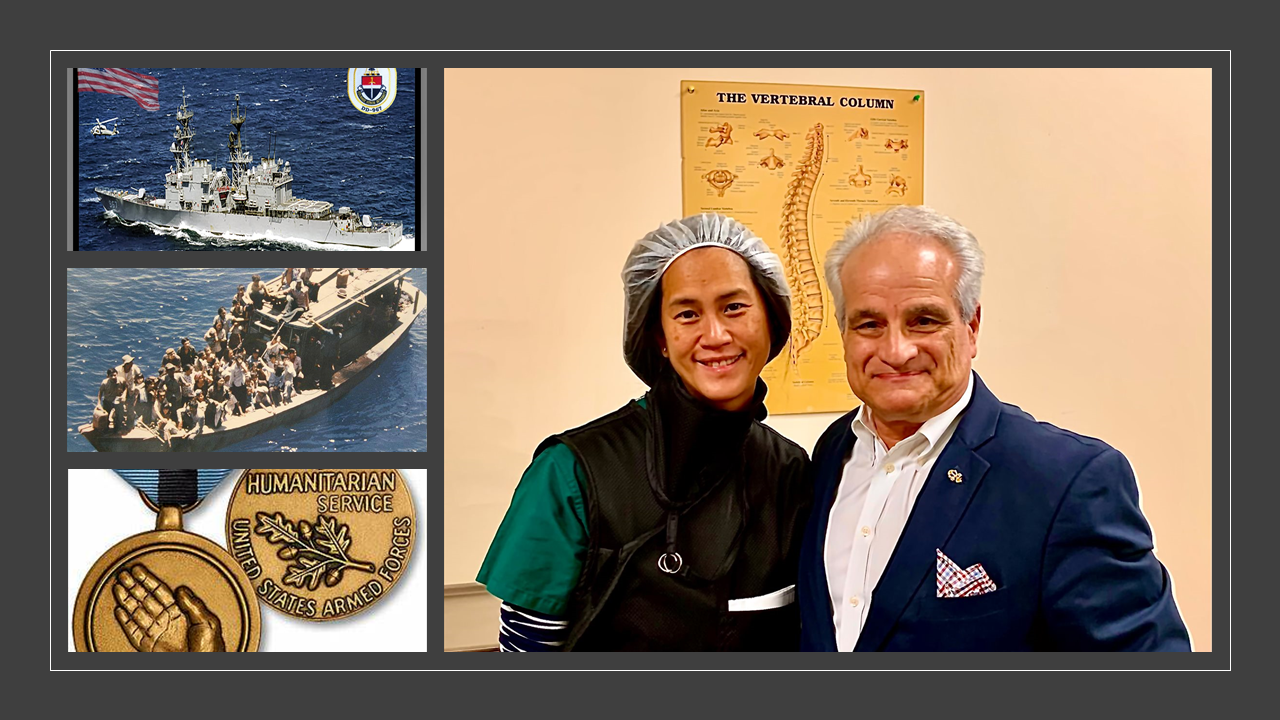I had the extraordinary pleasure of meeting (for the second time) Nghia (Le) Firth, a native of Cần Thơ, Vietnam. Nghia is the newest member of the pain-management clinic at Walter Reed National Military Medical Center (WRNMMC), Bethesda, Maryland and assisted my doctor with a platelet-rich plasma (PRP) injection into my shoulder. When I asked about her immigration into the US, she explained her family was part of the exodus of almost 800,000 Vietnamese from 1975 to 1995. In 1983, when she was only eight years old, her family traveled to a small port city, where they boarded a rickety boat, and set sail. The boat never made it out of the South China Sea. Two weeks after leaving the country, the bilge pumps failed, and the boat began to take on water. In less than 48 hours, the incoming seawater had shorted out all electrical systems, flooded the diesel engines rendering the boat dead in the water and at the mercy of the wind and tides. On July 31, 1983, just when the boat’s main deck became even with the surface of the ocean, and sinking seemed immanent, a miracle appeared on the horizon in the shape of a United States warship. On patrol during her third WestPac deployment, the forward lookout on Elliot spotted the floundering craft with 68 people her deck. Elliot pulled alongside the boat, and transferred all of the passengers and crew onboard. After giving all of the refugees a physical exam, the ship’s cooks provided their first cooked meal in weeks. Elliot and every member of the crew was awarded the Humanitarian Service Medal for the rescue operation. Nghia followed her childhood dream to give something back to her adopted country, she was commission in the US Navy’s Nursing Corps. Today, Nghia Firth continues her care of warfighters and their dependents as a federal employee at WRNMMC. When did I meet Nghia the first time you ask? When she and her family were rescued, I was a member of the the USS Elliot’s crew and still wear the Humanitarian Medal with pride.
